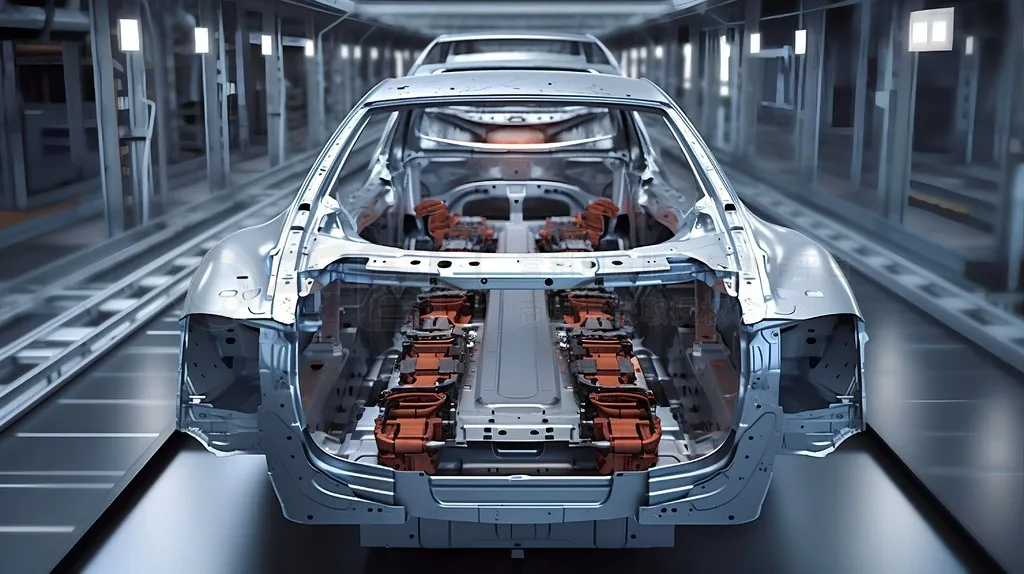The transformation of automotive architecture marks a pivotal evolution, beginning with advancements in electronic technology. Let us reflect on the 1957 Chevrolet Bel Air, a model that not only boasts an aesthetically pleasing design but also exemplifies simplicity in its internal configuration, particularly within its electrical system. At that time, its construction was remarkably straightforward. However, as electronic technology has progressed, so too has the electrical architecture of vehicles.
By 2018, a modern automobile must transmit as many as 15,000 data points in the blink of an eye, with projections indicating this number could soar to 100,000 by 2020. Consumer demand for safety and functionality in vehicles is escalating at an unprecedented rate, with an increasing number of features reliant on software. The performance enhancements provided by software positively impact the infotainment user experience, active safety measures, and connected services, while also laying the groundwork for the eventual realization of autonomous driving.
As the demand for software capabilities rises, the computational power of automotive architecture must similarly increase. To illustrate, the latest iPhone necessitates enhanced processing power to accommodate new applications, and likewise, vehicles require augmented computational power to support the latest functionalities. This implies that traditional automotive architecture is no longer viable, as it cannot sustain the burgeoning array of features and the increasingly complex structures, nor can it provide sufficient computational power to run intricate software algorithms. The existing network infrastructure fails to support future data transmission speeds.
In the 1950s, automotive electrical architecture primarily emphasized simplicity, characterized by a minimal number of electrical components, the absence of electronic elements, and a predominant 12-volt system, with circular terminals serving as the most basic connection method, predominantly featuring connectors like types 56, 58, and 59, made from standard insulating materials.
By the 1960s, automotive electrical architecture began to stabilize, driven by the rise in electrical components due to the proliferation of audio and lighting devices, with glass tube fuses becoming the standard for protection. The 1970s heralded a period of aspiration and imagination regarding electrical architecture systems, introducing electronic components without reverting to past emission standards, thereby fostering the development of electronic modules to meet emission requirements. Additionally, circuit protection transitioned to the adoption of smaller automotive fuses, while wiring harness positioning began to impose professional demands on electrical systems.
The 1980s represented a significant era for electrical architecture systems, as they entered the public consciousness and began to soar. Electronic integration propelled electrification, with new automotive regulations spurring an increase in the number of electrical components. Sealed connectors became industry benchmarks, achieving unprecedented levels of electrical partitioning and encapsulation. The increase in electrical applications posed greater challenges for automotive assembly.

The 1990s witnessed rapid advancements in electrical architecture systems, evolving specialized knowledge into a discipline requiring deep understanding to redefine architecture standards and optimize complexity management, becoming a focal point in automotive assembly plants. The miniaturization of cables and components improved packaging processes.
The year 2000, marking the turn of the century, brought fresh developments to electrical architecture systems, as the accelerating pace of growth rendered electronic technology essential for performance. The convergence of data and communication protocols spurred demand for new products, with equipment customization becoming the industry standard. The refinement of regulations fostered the evolution and application of new technologies.
By 2010, electrical architecture systems began to embrace connectivity and safety, with high-power management gaining traction. The integration of consumer electronic products added complexity to electrical systems, while safety concerns prompted the emergence of new electrical technologies. Regulatory mandates regarding fuel economy in the United States accelerated the development of high-voltage power systems, exposing emerging issues such as driver distraction.
In 2020, mobility emerged as a defining characteristic of electrical architecture systems, with new systems transcending onboard limitations. The ongoing demand for advanced connectivity and safety will continue to propel the development of next-generation cables and connectors. The evolution of regulations will further drive the advancement and application of electronic technologies, while sophisticated communication protocols will introduce novel innovations. Growing concerns regarding network security will necessitate the development of multiple redundancies and fault-tolerant mechanisms.
Looking toward the future of 2030, electrical architecture systems are expected to trend toward advanced integration, merging safety, eco-friendliness, and connectivity. Multi-voltage partitioning will increase the complexity of device electrification, while autonomous driving features will create additional high-speed data networks. The emergence of more functionalities in vehicles implies a need for enhanced computational capabilities to process greater volumes of data and allocate higher power levels. As automobiles gradually evolve into sophisticated interconnected supercomputers, their underlying architecture will require a thorough overhaul. The traditional automotive architectural frameworks have become ineffective, unable to support the growth of applications and complexity.
Through intelligent automotive architecture, the integration of various systems will enable the full realization of features such as electrification, active safety, autonomous driving, and connectivity, establishing a robust foundation for the future of automotive development. Regarding autonomous driving technology, this necessitates that the safety integrity level of self-driving vehicles must reach Level D, ensuring that these vehicles can operate safely even in the event of a malfunction. This imperative disrupts traditional electrical architectures, profoundly impacting power distribution, networking, and computational systems.

